D-Day 80th anniversary recalls the millions involved in giant operation and its aftermath
GIBSONBURG ― The 80th anniversary of D-Day is marked on June 6, but with more than 16 million Americans having served during World War II, the number of men and women involved in the operation was much greater than those pictured storming the beaches on that first day of Operation Overlord.
The numbers are estimates, but approximately 160,000 Allied troops, mostly from the United States, the United Kingdom and Canada, landed that day on the beaches of Normandy, France. However, there were already troops behind the lines, and a total of about 875,000 would arrive over the coming month. Approximately 10,000 were injured on D-Day, 4,414 confirmed killed in action.
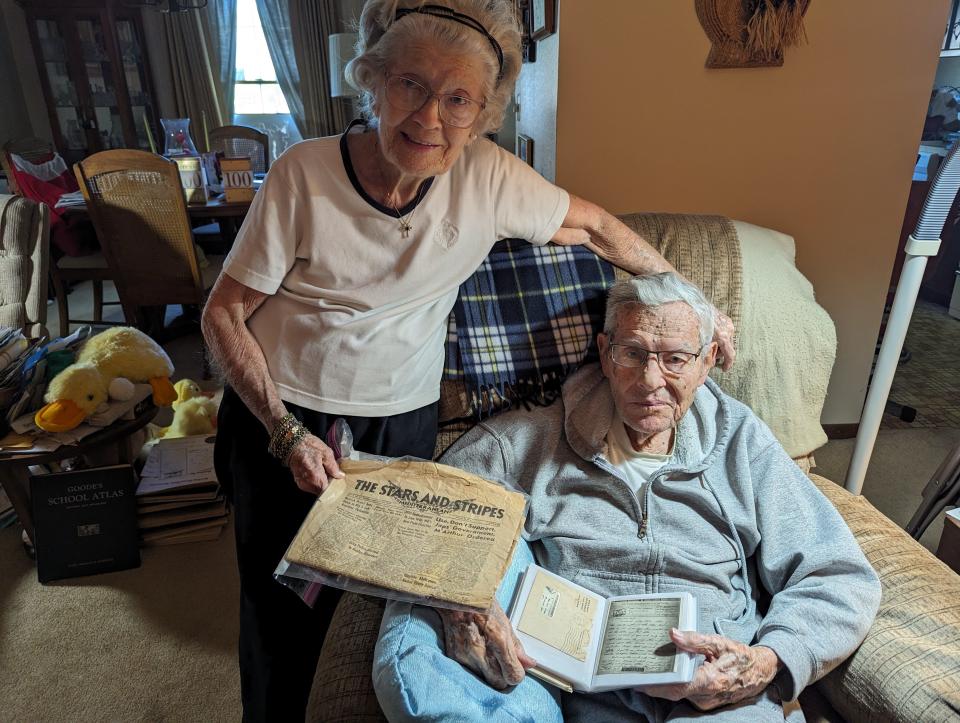
Those are big numbers, but operation planning had taken place for years, and work behind the lines involved many millions of personnel.
We honor those soldiers who lost their lives and stormed those beaches. They all risked making the ultimate sacrifice, and success didn’t happen without what could have been the largest single group effort in history. Much of the work involved essential but seemingly mundane activity by people who also put their lives on hold, missed important events with friends and family and risked being attacked on bases and during travel.
More: The war was fought at home as well as abroad
One of those men is the oldest living veteran in Sandusky County, Ned Robinett. He was part of the 181st Quartermaster Depot Supply Co., stationed in North Africa and Italy. He was honorably discharged at the rank of sergeant in 1945.
Robinett celebrated his 100th birthday Sept. 1, and this year he plans to celebrate his 70th wedding anniversary with his wife, Juanita.
Robinett doesn’t say much these days, but Juanita Robinett has heard the stories. What Ned Robinett couldn’t add during an interview, he confirmed.
There is also the album Juanita Robinett put together with all of her husband's V-mail ― "V" for Victory ― correspondence that was sent back home. V-mail letters were an official military letter sent back to the states, often with sections redacted, about twice the size of a postcard.
Juanita Robinett said her husband’s unit mostly followed Gen. George Patton.
He was stationed in North Africa and then in Italy.
To make that trip, the unit boarded a Polish freighter bound from North Africa to Sicily.
“The boat trip was frightening, with the lights of gunfire overhead and U-Boat sign in the water,” Juanita Robinett said.
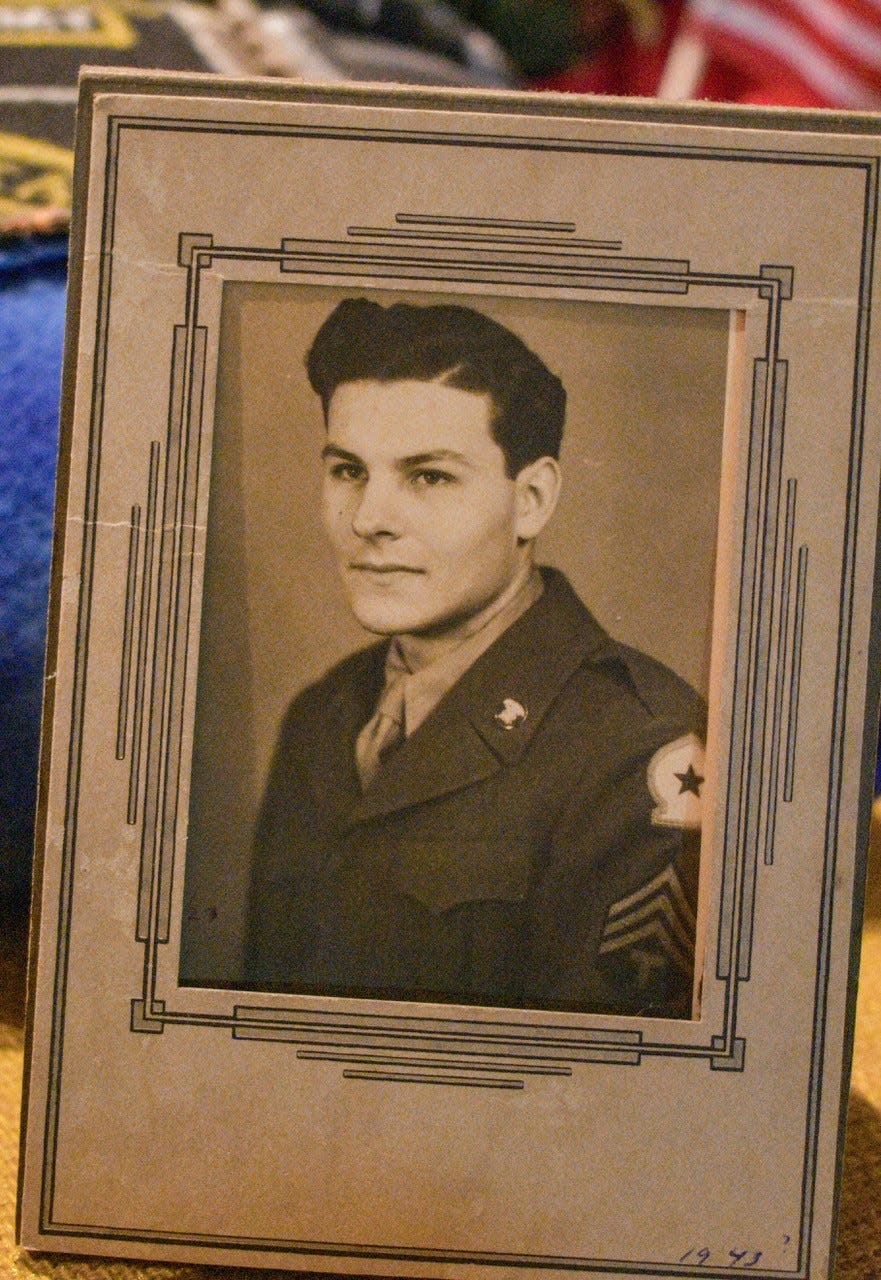
Rex Postlethwait, a retired veteran and curator for the Northcoast Veterans Museum, in Gibsonburg, filled in some blanks. Adding information about the American troops fighting in Africa, and then Patton's and the American troops' movements north.
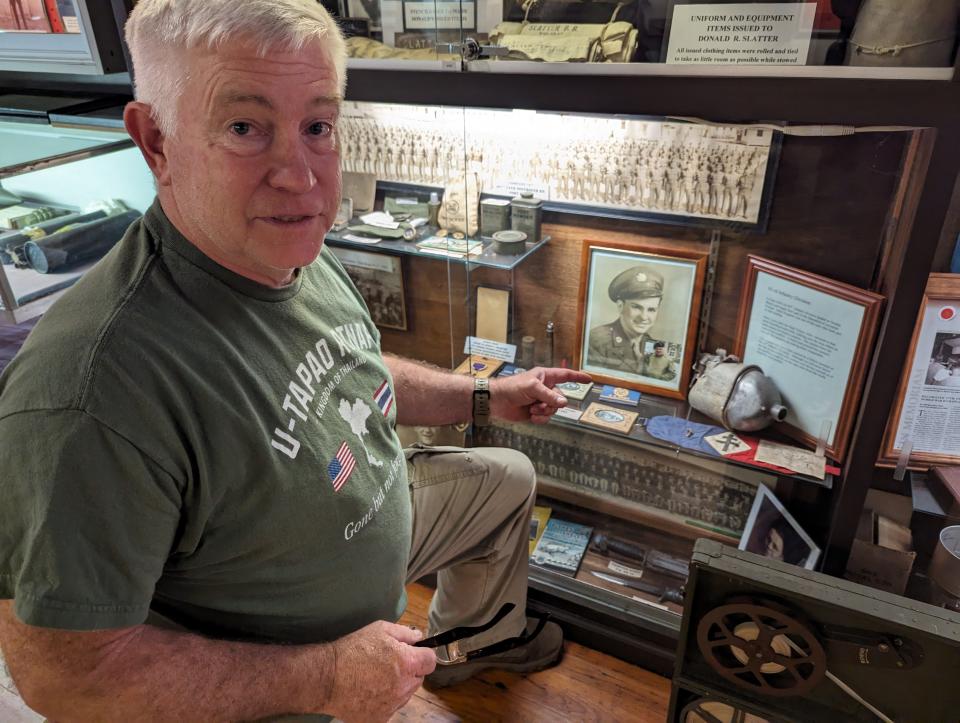
“They took troop transports from North Africa to Sicily. From there, they had a close embarkation to go from Sicily into Italy. They did that both by air and by sea. The troops in Italy would have fought all the way up the boot to Switzerland, kicking the Germans out, and it took a long, long time,” Postlethwait said.
Postlethwait said those sailings were dangerous and the crews knew the signs of submarines, called U-Boats, that might be following, as they did during Ned Robinett's trip. It happened often enough that there were standardized regulations for time-off to convalesce, for the survivors retrieved from the water, or from a downed plane.
More: Holcomb remembers camp, 'Black March'
Ned Robinett was drafted while studying accounting at Bowling Green State University. Juanita Robinett has the letter from the university noting the pause in his education to join the war effort. He returned after the war, completing his degree and working as an accountant for the next 35 years.
Postlethwait explained daily life for those troops.
“What they used in Italy was called the Redball Express, and they had very good success at getting supplies to the front lines. They had a better success rate than any other unit that did supply,” he said. “They would follow the front lines and supply them with medicine, food, bullets, everything that they needed. Everything from T-shirts to toilet paper, and it was all important, including the V-mail. … They had so many support people, from the people loading the bombs, to the mechanics, and those were all the people who had the downtime.”
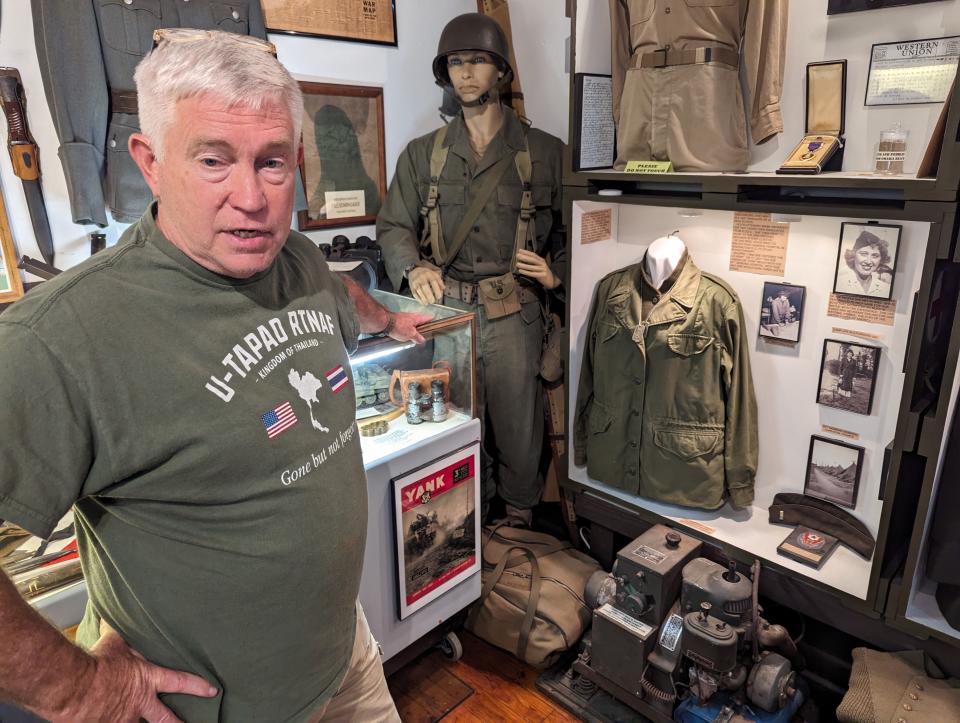
The downtime while on a ship, or for mechanics waiting at an airfield for planes to return from a bombing run, could be boring. They might read books, play baseball or have snowball fights. Many of the soldiers were still in their early 20's or younger.
“It’s sheer boredom, with little periods of just so much going on that it is really difficult to explain,” Postlethwait said. “(Ned Robinett) was an office person. He would have been getting paperwork ready. …He would have planned on bringing supplies up from the beach, and he would request what was needed, making requisitions for 7.62 mm ammunition, or whatever they were using at the time.
“His job was one of those jobs that probably went on continually. He probably didn’t have a lot of downtime because of that. He probably got home, put himself in a bunk and went to sleep, and ate intermittently. His job would have kept him really, really busy, and they would have relied on him, because he wasn’t a front-line troop,” Postlethwait said.
Port Clinton history: Veteran remembers chaos, death surrounding D-Day landing
The men who weren’t in an office setting are often the ones pictured in movies, on a dock or an airfield.
“They played a lot of cards, they did a lot of drinking and they did a lot of sightseeing. The military provided them with brochures about the areas that we took back from Germany, after D-Day, brochures on the Eiffel Tower, the Louvre, everyplace as they moved across Europe,” Postlethwait said.
Ned Robinett wrote back to family members about those times when he was on leave, when he visited Pompeii, and Verona, Italy, probably because that information would not have been censored, and because it was what he did to get a break from the paperwork.
“In most places, it would have been for short trips, 50 or 60 miles, but with a three-day pass he could have gone from Rome all the way to Paris, France,” Postlethwait said.
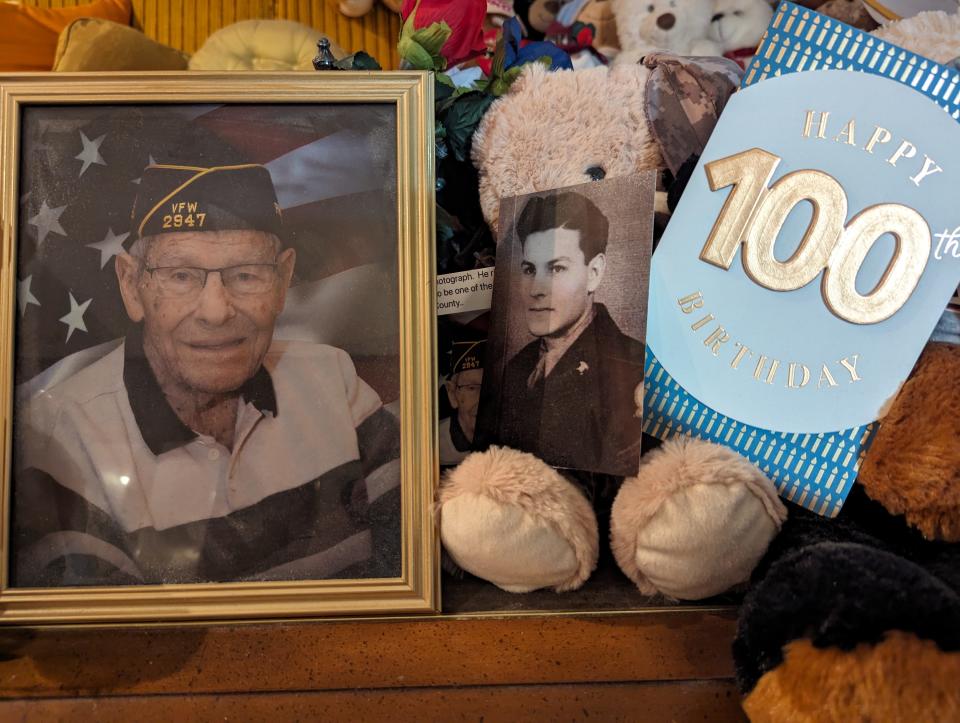
The Department of Veterans Affairs reported in 2023 that just 119,550 of the 16.4 million Americans who served in World War II remained alive.
rlapointe@gannett.com
419-332-2674
This article originally appeared on Fremont News-Messenger: D-Day 80th anniversary spotlights millions involved in giant operation

